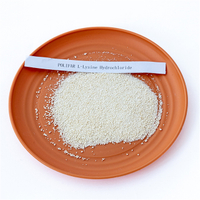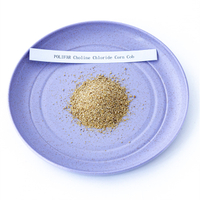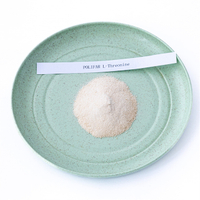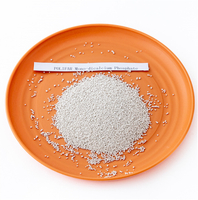| Availability: | |||||||||
|---|---|---|---|---|---|---|---|---|---|
| Color: White or Light yellow Material: corn Sales Models: wholesale Min Order: 20mt Shelf Life: two years when properly stored Packing: net 25kg/50kg/600kg in Plastic woven bags with PE lining Storage: stockpiled at the ventilated place, avoiding rain, moisture and insolation. Please handle with care to prevent bag damage, store away from toxic substances. | |||||||||
Assay/%≥98.50
POLIFAR
292249
| CAS No.: | 72-19-5 | Other Names: | L-Threonine feed grade |
| Molecular formula: | C4H9NO3 | EINECS No.: | 200-774-1 |
| Place of Origin: | China | Type: | Feed grade amino acid |
| Efficacy: | promote growth | Brand Name: | Polifar |
| Model Number: | Feed additives | Appearance: | White powder or granule |
| Shelf Life: | 2 years | MOQ: | 1000kg |
| Sample: | Free,≤500g |
【Product performance】:
As amino acid for forge, threonine is widely added in the forage for newborn pig, covering pig, poultry, shrimp, eel and so. It can:
1. Keep the balance of amino acids in the forage and stimulate the growth of the animals;
2. Improve the meat quality;
3. Increase the nutritive value of forage raw materials which have low amino acid digestibility;
4. Apply to the production low-protein forage;
5. Cut down the cost of raw materials for forage;
6. Decrease the nitrogen content in the excrement and urine of animals so that the release of ammonia is slowed and the ammonia concentration is kept low in animal shed. Meihua, Eppen, FUFENG, JINXIANG
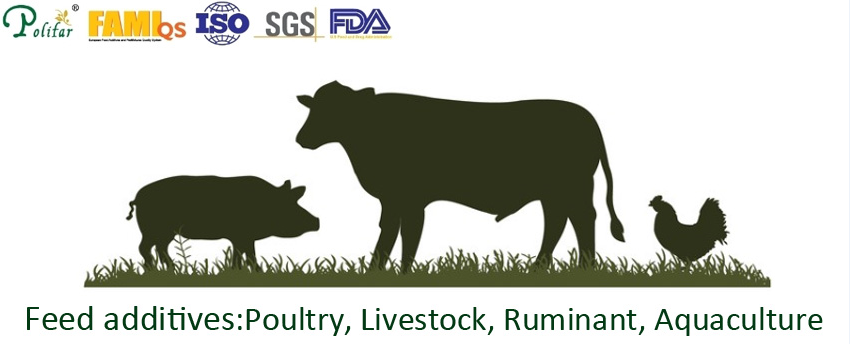
| CAS No.: | 72-19-5 | Other Names: | L-Threonine feed grade |
| Molecular formula: | C4H9NO3 | EINECS No.: | 200-774-1 |
| Place of Origin: | China | Type: | Feed grade amino acid |
| Efficacy: | promote growth | Brand Name: | Polifar |
| Model Number: | Feed additives | Appearance: | White powder or granule |
| Shelf Life: | 2 years | MOQ: | 1000kg |
| Sample: | Free,≤500g |
【Product performance】:
As amino acid for forge, threonine is widely added in the forage for newborn pig, covering pig, poultry, shrimp, eel and so. It can:
1. Keep the balance of amino acids in the forage and stimulate the growth of the animals;
2. Improve the meat quality;
3. Increase the nutritive value of forage raw materials which have low amino acid digestibility;
4. Apply to the production low-protein forage;
5. Cut down the cost of raw materials for forage;
6. Decrease the nitrogen content in the excrement and urine of animals so that the release of ammonia is slowed and the ammonia concentration is kept low in animal shed. Meihua, Eppen, FUFENG, JINXIANG

Testing Item | Standard | Result |
Assay/% | ≥98.50 | 99.30 |
-28.40° | ||
Loss on Drying/% | ≤1.00 | 0.50 |
Residue on Ignition/% | ≤0.30 | 0.20 |
Heavy Metal(Pb)/%(mg/kg) | ≤20 | <20 |
Arsenic(As)/%(mg/kg) | ≤2 | <2 |
Testing Item | Standard | Result |
Assay/% | ≥98.50 | 99.30 |
-28.40° | ||
Loss on Drying/% | ≤1.00 | 0.50 |
Residue on Ignition/% | ≤0.30 | 0.20 |
Heavy Metal(Pb)/%(mg/kg) | ≤20 | <20 |
Arsenic(As)/%(mg/kg) | ≤2 | <2 |
| Product Storage: | Stockpiled at the ventilated place, avoiding rain, moisture and insolation. Please handle with care to prevent bag damage, store away from toxic substances. |
| Product Packaging: | Net 25kg in Plastic woven bags with PE lining |
| Loading: | 20MT/20FCL'; 16MT/20FCL' with pallets |
| Delivery: | About 1 - 2 week |
| Product Storage: | Stockpiled at the ventilated place, avoiding rain, moisture and insolation. Please handle with care to prevent bag damage, store away from toxic substances. |
| Product Packaging: | Net 25kg in Plastic woven bags with PE lining |
| Loading: | 20MT/20FCL'; 16MT/20FCL' with pallets |
| Delivery: | About 1 - 2 week |
Q1: What is feed grade L-threonine?
A1: Feed grade L-threonine is a specific form of the essential amino acid L-threonine that is produced and formulated for use as an additive in animal feed. L-threonine is categorized as an essential amino acid because animals cannot synthesize it in sufficient quantities and must obtain it from their diet. Feed grade L-threonine is typically manufactured through fermentation or chemical synthesis processes to ensure its purity and quality meet the requirements for animal nutrition. It is commonly used in animal feed formulations to supplement and balance the amino acid profile, particularly in diets where the natural sources of L-threonine may be inadequate to meet the animals' requirements for growth, development, and overall health.
Q2: What is the difference between feed grade L-threonine and L-arginine?
A2: Feed grade L-threonine and L-arginine are both essential amino acids used in animal nutrition, but they serve different functions in the body and have distinct characteristics. L-threonine is primarily involved in protein synthesis, immune function, and intestinal health, while L-arginine plays roles in protein metabolism, immune response, hormone secretion, and blood vessel dilation. Additionally, L-threonine has a hydroxyl group (-OH) attached to its side chain, whereas L-arginine contains a guanidino group (-NH-C(NH2)(NH2)) in its side chain. While both amino acids are important for animal health and growth, they are sourced differently and have specific applications in animal feed formulations.
Q1: What is feed grade L-threonine?
A1: Feed grade L-threonine is a specific form of the essential amino acid L-threonine that is produced and formulated for use as an additive in animal feed. L-threonine is categorized as an essential amino acid because animals cannot synthesize it in sufficient quantities and must obtain it from their diet. Feed grade L-threonine is typically manufactured through fermentation or chemical synthesis processes to ensure its purity and quality meet the requirements for animal nutrition. It is commonly used in animal feed formulations to supplement and balance the amino acid profile, particularly in diets where the natural sources of L-threonine may be inadequate to meet the animals' requirements for growth, development, and overall health.
Q2: What is the difference between feed grade L-threonine and L-arginine?
A2: Feed grade L-threonine and L-arginine are both essential amino acids used in animal nutrition, but they serve different functions in the body and have distinct characteristics. L-threonine is primarily involved in protein synthesis, immune function, and intestinal health, while L-arginine plays roles in protein metabolism, immune response, hormone secretion, and blood vessel dilation. Additionally, L-threonine has a hydroxyl group (-OH) attached to its side chain, whereas L-arginine contains a guanidino group (-NH-C(NH2)(NH2)) in its side chain. While both amino acids are important for animal health and growth, they are sourced differently and have specific applications in animal feed formulations.





